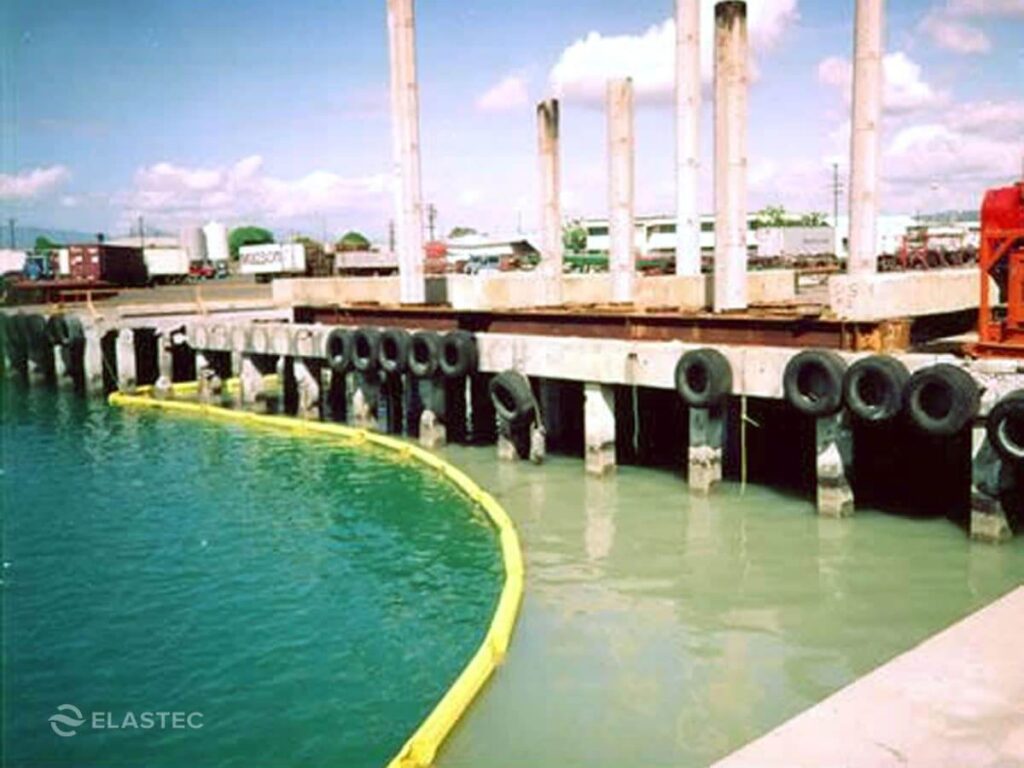
Silt curtains (also sometimes referred to as turbidity curtains) are an essential component of environmental protection for marine and freshwater construction sites. They serve to contain suspended sediment (silt) within a designated area, preventing it from impacting surrounding ecosystems. While effective in many conditions, the performance of deeper silt curtains is significantly influenced by tidal flow. Understanding this dynamic is key to designing a successful containment strategy.
What Happens When Silt Curtains Are Used in Tidal Waters?
Tidal waters, especially those with fast-moving currents, present unique challenges. When a silt curtain is deployed in such environments, the hydrodynamic forces created by water movement exert lateral pressure against the curtain. This pressure increases with both current velocity and curtain depth. The result is that deeper silt curtains are harder to keep vertical and effective.
Why Curtain Depth Matters
The general rule is: The deeper the silt curtain, the calmer the conditions need to be.
Let’s break this down.
A silt curtain that extends 30 feet deep in a 2-knot tidal flow may only be effective to a depth of 13 feet. The remainder of the curtain is pushed horizontally by the water current, lifting or bowing it out of position. This reduces containment effectiveness and increases the risk of sediment escaping the work zone.
Here’s why:
- Hydrostatic and hydrodynamic forces increase exponentially with depth.
- Drag on the curtain fabric grows with the surface area exposed to the flow.
- Anchor lines and ballast systems experience greater strain, making it harder to maintain vertical orientation.
In short, deeper curtains behave like underwater sails in strong currents, becoming unstable and difficult to control.
The Limits of Anchoring in Strong Currents
Even with heavy-duty anchoring systems, a deep silt curtain in fast tidal flow will tend to tilt, lift, or even breach its intended perimeter. As the curtain is forced horizontally, anchoring lines can snap or detach, leading to complete failure of containment.
For example:
- In a 2-knot current, drag on a 30’ deep curtain can exceed design tolerances for most curtain materials and mooring systems.
- Deployment may require divers, tensioned mooring arrays, and weighted ballast chains to stabilize, which drastically increases cost and complexity.
Best Practices for Using Silt Curtains in Tidal Waters
If your project requires sediment control in tidal conditions, especially with deeper curtains, consider the following:
1. Evaluate Site Conditions First
- Conduct a hydrodynamic study of tidal currents (speed, direction, variability).
- Determine if flow conditions ever exceed 1 knot. If so, re-evaluate curtain depth.
2. Use Tiered or Staged Curtains
- Instead of a single deep curtain, use overlapping layers of shallower curtains.
- This reduces surface drag and improves stability.
3. Install Tensioned Mooring Systems
- Use floating buoys and subsea anchors with adjustable tension lines.
- These help maintain curtain orientation and limit lateral displacement.
4. Time Your Deployment
- Schedule activities during slack tide when current velocity is lowest.
- Temporary drawdowns or partial closures may be needed during peak flow.
5. Use High-Strength Materials
- Opt for reinforced geotextile fabrics and marine-grade hardware.
- Heavier ballast chains (e.g., galvanized steel) improve vertical positioning.
Conclusion
Deploying deeper silt or turbidity curtains in tidal flow is possible, but not without significant planning and engineering considerations. As a general guideline, deeper curtains demand calmer waters, or they risk becoming ineffective due to current-induced displacement. In scenarios where tidal flows reach 2 knots, a 30’ deep curtain may perform more like a 13’ curtain — making it crucial to match curtain design with actual site conditions.
To ensure compliance and environmental protection, always consult with a qualified marine engineer or silt curtain specialist before selecting and deploying your system.
Connect With Us
Sign up for our newsletters to receive the latest news and product information from Elastec.


